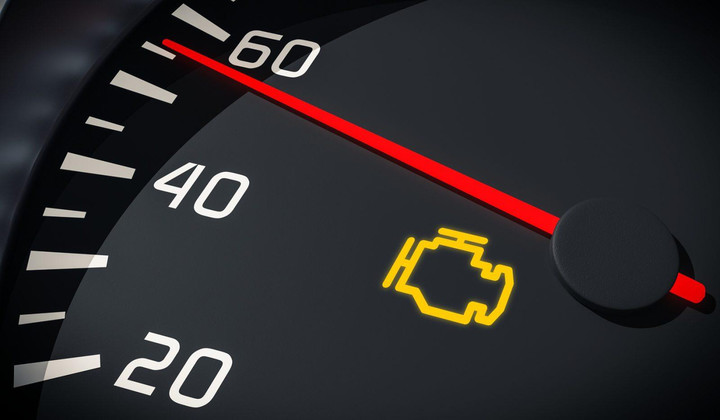9:33 AM 3 Ways to Reset a Check Engine Light | |
|
When the automobile was first invented, it was a purely mechanical creation. Fast-forward 130 years: Dozens of computers control everything from wiper blades and power windows to the internal combustion engine and transmission. The two main computers we usually worry about are the engine or powertrain control module (ECM or PCM) and the transmission control module (TCM). Physically, the ECM and TCM may be located anywhere in the vehicle, such as in the trunk, under the dash, or under the hood. Using dozens of sensors, such as those that measure engine coolant temperature or transmission output shaft speed, the ECM monitors engine and transmission function. Using this data, it can fine-tune actuators to deliver more power when needed and reduced emissions whenever possible. If the ECM detects a problem, such as sensor data out of sync or air flow readings that don’t “make sense,” it will turn on the check engine light, also known as the malfunction indicator lamp or service engine soon light (CEL, MIL, or SES). At the same time, the ECM stores a diagnostic trouble code (DTC) in memory. If the check engine light comes on, one or more of some 10,000 DTCs might be stored in ECM memory. While the DTC does not tell an auto repair technician what to replace, it can lead them in the right direction to make a repair. Once repairs are completed, the technician clears or “resets” the DTCs, turning off the CEL. If you’re a do-it-yourselfer or you just don’t want to see the light, you have a couple of options to reset the check engine light, aside from pulling the bulb or covering it with electrical tape. Fix the Problem By far, the best way to reset the check engine light is to fix the problem that the ECM is reporting. Once the ECM sees that the problem is no longer occurring, such as a cylinder misfire or loose gas cap, it will clear the DTC and turn off the check engine light on its own. The only problem with this method is that it’s a waiting game. Each vehicle has its own criteria for self-clearing DTCs and turning off the CEL, so it may take days or weeks for the ECM to do it on its own. If you can’t wait that long, there are two more methods to reset the check engine light. OBD2 Scan Tool The easiest way to reset the check engine light and clear any codes is to use a scan tool, which plugs into the ODB2 DLC (On-Board Diagnostics Generation Two Data Link Connector) port, usually somewhere on the driver’s side. Check your owner’s manual for the location. There are different types of scan tools, each varying in price, capability, and usage.
To reset the check engine light using the scan tool, whatever type you use, start with your vehicle turned off. Plug your OBD2 scan tool into the DLC, then turn the key to the “On” position, but do not start the engine. At this point, you should have the option on your tool, laptop, or app to connect to the ECM, and you’ll have to wait a minute or so for it to connect and communicate with the ECM. Activate the function “Clear DTCs” or “Erase Codes” or similar, which may take a few seconds to complete. Read the documentation that came with your particular tool or app for specific instructions. After the scan tool confirms the operation is complete, turn the key to the “OFF” position for at least 10 seconds. You should be able to start the vehicle, at which point the check engine light should be off. Read the manual for your scan tool or app for exact instructions. ECM Hard Reset One final option is called a “Hard Reset,” which requires you to disconnect the battery. With the vehicle turned “OFF,” disconnect the battery negative (–) terminal clamp. This usually requires just a 10 mm or 1/2-in socket or wrench. With the battery disconnected, depress the brake for a about a minute. This will deplete any energy in vehicle capacitors. After enough time as passed, release the brake and reconnect the battery. Depending on the vehicle, this may or may not work, because ECM memory may not be voltage dependent. If the hard reset is successful, DTCs and the CEL will be cleared. Still, your vehicle may not “feel right” for a couple of days until the ECM and TCM relearn their fine-tuning. Some car radios and aftermarket alarm systems may go into anti-theft mode, as well, and you may be prevented from starting the car or using the radio without a certain code or procedure. Why Do We Need This?The main reason for the check engine light is to let you know that your vehicle isn’t running as well as it was designed, and is probably generating higher emissions than it should. At the same time, you might also notice a decrease in performance or fuel economy. The best thing to do is to fix the problem that the ECM is detecting. This will keep your emissions down and reduce refueling costs. | |
|
| |
| Total comments: 0 | |
